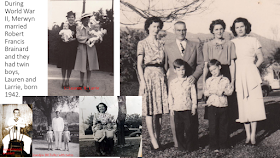Introduction of A La Carte Food and Fiction
A LA CARTE
FOOD & FICTION
Collected and Edited by
Cecilia Manguerra Brainard
Marily Ysip Orosa
Kindle Ebook published by PALH
A La Carte is the winner of the prestigious Gourmand Award
2008 as the Best Food Literature Book from the
Philippines.
INTRODUCTION
Cecilia
M. Brainard
In some places in the Philippines,
people greet you by asking if you have eaten: not Good morning, or Good evening
but — Kumain ka na? — Have you
eaten? And even if you have, they will
serve you food anyway, and it would be considered an insult if you did not
eat.
Even when I was young, I had an
inkling about the special relationship Filipinos have with food. At home my mother was constantly prodding
people to eat more— a habit I have picked up, sometimes to the embarrassment
and annoyance of my American sons.
Another thing that annoys them and
my American husband is my difficulty to throw food away, so much so that my
refrigerator is filled with bowls of forgotten dishes, some of them with very
interesting multicolored mold on them. I had a son threaten to use one of those
forgotten containers for a Science project!
I had to explain to them that the
inability to waste food came from my mother, who with the family spent the
World War Two years in Mindanao, and who, like
many other Filipinos during those War years, experienced hunger and
deprivation. But I suspect the
reluctance to throw food away runs deeper than that; perhaps to Filipinos, it
is clear that food is life, and life should not be thrown away or treated with
disrespect.
Indeed the connection Filipinos have
with food is almost religious. Eating is the time when the family gathers, when
the community is one, and is something of a sacred time. In the home I grew up
in, the entire family sat down for breakfast, lunch, and supper. Lunch and
supper were elaborate, with soup, and fish, and meat, and rice, and vegetables,
followed by a variety of fruit and/or some sweet for dessert. I believe there
are still many Filipino households that have meals like this. Others, because of their modern hectic lives,
have simplified their daily meals, but when it comes to parties, Filipinos
still go the full length to have a grand spread.
It was this deep connection that
Filipinos have for food that prompted Marily Orosa and me to edit this
collection of Philippine stories and recipes. Marily and I have shared a love
for fiction primarily because stories reflect the soul or culture of people. So
does food and we thought combining stories and recipes in one book would reveal
Filipino culture in a unique manner and would invite lovers of both stories and
food to take a look at our delectable collection.
Soon after the release of the other
book Marily Orosa and I co-edited (Behind
the Walls: Life of Convent Girls, Anvil, 2004) we publicized a search for this
collection. Initially, we anticipated we’d get light stories, possibly comic
ones. When the stories started coming in, we were surprised to see that the
topic of food had triggered some serious stories. We quickly realized that food
and eating bring back memories of families and friends, and relationships are
always complex. The stories we finally selected were by writers from America,
the Philippines, Singapore, Australia, France, and Germany. The majority of the
contributors are published writers who are well-known in the literary and
academic communities.
An inspiration to this book is
Laura Esquiviel’s novel, Like Water for
Chocolate. Each chapter in Esquiviel’s book is introduced by a recipe so
that the chapters flow out of those recipes. Likewise, the 25 stories in our
collection are preceded by related recipes. Following the food theme, we
arranged the book like a menu, and so we have categories of Breads, Appetizers,
Salads; Soup; Rice; Main Dishes; and Dessert, with the recipes and stories
falling under the appropriate sections.
The recipes included in the book
are: Aragula in Blue Cheese Sauce; Shrimps on Leeks; Tokwa’t Baboy; Banana
Turon; Pan de Sal; Ensaymada; Green
Mango Relish; Feta Cheese with Greens, Artichokes, and Crabfat; Shanghai Fried
Rice; Garlic Fried Rice; Pork Adobo; Manok Inasal; Paella/Arroz; Kare-Kare;
Lumpia, Laing, Sinanglay na Karpa; Pork Sinigang; Filipino-Korean Lumpia;
Rellenong Bangus; Humba; Escabeche; Binagoongang Baboy; Cascaron; and
Halo-Halo. They have not been taste-tested and we suggest that those who wish
to try the recipes do so in the spirit of experimentation and adventure.
Some stories in the collection are
light-hearted. Edna Weisser’s “Merienda Alemania” is an autobiographical piece about a Filipina and
her husband in Germany who have invited their friends over for merienda, but this
time with the German touch. The stories of Dean Francis Alfar and Ian Rosales
Casocot, combine magic-realism and slapstick. Alfar’s “Sabados Con Fray
Villalobos” relates the Spanish friar’s attempts to win the hearts of Filipino
Indios although some Indios have other ideas. Casocot’s “Pedro and the Chickens”
is about the blossoming of a romance in the town of Dumaguete and the accompanying
strange events that happen to the town’s chickens. The story “Wok Man” (by Jose
Dalisay) is about the kinship of a short-order cook and his employer who both
find joy in cooking. “Hanging Rice” by Carlos Cortes is a short-short about a
Visayan eating Cebu’s common street meal; what’s uncommon about it is how the
rice is wrapped in a work of weaver’s art.
The other stories have a more
serious style. “In Bread” (by Ma. Romina
Gonzalez) a 26-year old woman prepares bread as her mother had taught her and
recalls the time her father left her mother. “Ensaymada” (by Corinna Arcellana
Nuqui) is about a homesick Filipina in the U.S. who in the act of baking visits
her past. Margarita Marfori’s “Mango Seasons” is a first-person piece focusing
on the narrator’s memories of a special summer, brought on by the cutting down of
an ancient mango tree. Alfred Yuson’s “Romance and Faith on Mount Banahaw” is a
surreal piece accompanied by the salad recipe (in poetry form) of “Feta cheese,
with Greens, Artichokes, and Crabfat.”
Linda Ty-Casper’s story, “Visit to
Myself,” is about a 15-year old girl and a 94-year old woman, and how they, one
hurrying to the future and the other living in the past, recognize one another.
My story (Cecilia Manguerra Brainard), “Romeo,” focuses on the narrator’s
mother, now old and whose sole companion is the dog, Romeo, who had once
belonged to the narrator. Janet Villa’s “Close Open” and Joel Tan’s “Sinanglay
na Karpa” look at people trapped in relationships that they cannot escape. Marie
Aubrey Villaceran’s story, “Sinigang” is about a girl, who while cooking,
recalls the funeral of a half-brother and it is also during this time that she
comes to terms with her relationship with her father.
Shirley Mae Mamaril Choe’s “Kitchen
Secrets” is about a young girl who struggles to reveal a terrible family
secret. Through her weekly cooking lessons, she develops a strong relationship
with her mother which enables her to finally share her burden. Reine Arcache
Melvin’s “The Fish” is about complex relationships among members of a household
that come to head during the gutting of a fish caught after a shipwreck. Erma
Cuizon’s “Secret Scent” is nostalgic piece about a woman who yearns for the old
life that is gone forever. “Two Drifters”
by Veronica Montes is about a young woman who has to cope with the addiction
and brokenness of her family members. Brian Ascalon Roley’s
semi-autobiographical piece, “In Memory,” remembers a menacing encounter at
summer camp in the ‘70s, involving his Filipina mother and white father.
Edgar Poma’s “Desperata” is set in
Hawaii, about a struggling writer’s break when a firefighter managed to find an
editor’s note to have his work published. The firefighter’s visit to Hawaii
makes the writer realize that his mother needs more than phone calls, but that,
as the firefighter said: “You gotta see her every
chance you get while you still can and you gotta hold her in your
arms." Oscar Penaranda’s
story, “Mango Lady,” recounts a Filipino American’s visit to the Philippines
after an absence of 19 years and his search of the fruit vendor who a part of
the memories of his youth. The
accompanying recipe is a favorite dessert, Halo-Halo.
The stories in this book are a mixed
bag of joyful stories as well as more somber ones; all of them explore the
dynamics of human relationships. The
editors of this book sincerely hope the reader will find enjoyment in them.






















